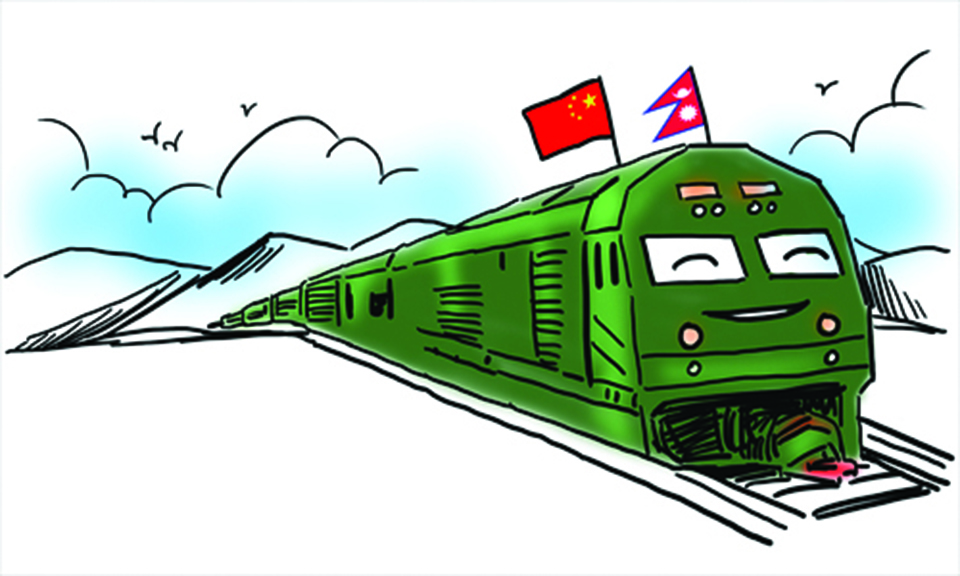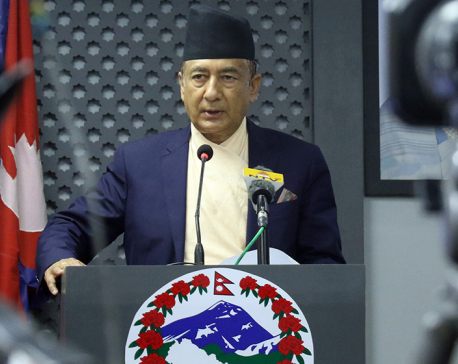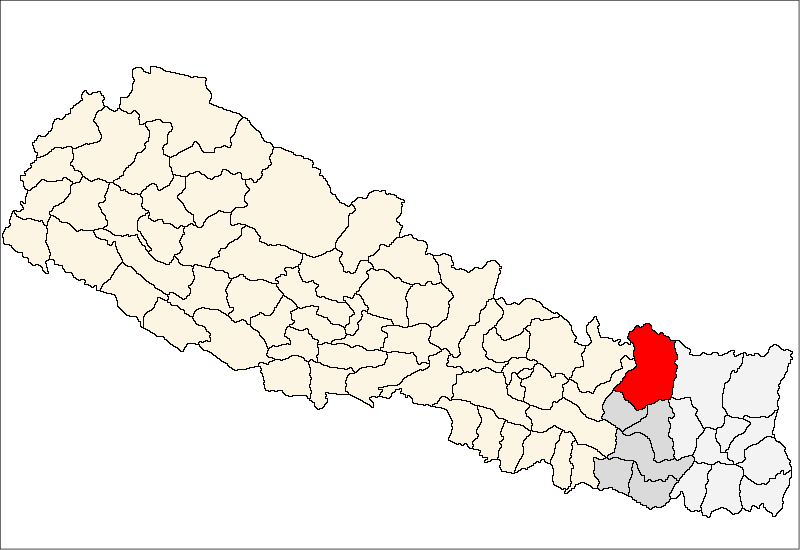
OR
Has Nepal lost interest in the cross-border railway network with China?
Published On: October 1, 2023 08:15 AM NPT By: Sajira Shrestha

KATHMANDU, Oct 1: Prime Minister Pushpa Kamal Dahal returned home on Saturday after completing his week-long official visit to China, marking a significant diplomatic journey since he assumed office in December last year. During the visit, held at the invitation of his Chinese counterpart Li Qiang, both nations engaged in substantive discussions and negotiations covering a wide spectrum of topics encompassing politics, economics, trade, and cultural relations.
Upon his arrival in Kathmandu, Prime Minister Dahal said that his China visit was more successful than he had initially expected. He stated that there was an agreement to reopen all border crossings between Nepal and China that were operational before the onset of the COVID-19 pandemic. The construction of the Jilong-Keyrung-Rasuwagadhi-Chilime 220 KV Cross-Border Transmission line at an early date was one of the important agreements reached during this visit.
However, the much-touted cross-border Himalayan railway project – a part of the Belt and Road Initiative (BRI) – does not seem to have figured prominently during this visit. This raises a question: Has Nepal already lost its interest in the cross-border railway network with China?
The idea of a cross-border railway network – a part of Trans-Himalayan Multi-Dimensional Connectivity Network – initiated during Prime Minister KP Sharma Oli's visit to China in June 2018 seeks to enhance connectivity between the two countries. Under this agreement, both countries have committed to conducting a pre-feasibility study with the support of Chinese grants aimed at realizing the trans-Himalayan railway project.
This ambitious 170-kilometer rail endeavor, a part of the BRI, is set to connect Kerung (Gyirong) in southern Tibet to Kathmandu, traversing Nepal's Rasuwa district, with future plans to extend the railway beyond Kathmandu.
When Chinese President Xi Jinping visited Nepal in 2019, an agreement was inked to initiate a feasibility study on the Nepal-China cross-border railway construction. Subsequently in March 2022, during the visit of Chinese Foreign Minister and State Councilor Wang Yi to Nepal, a technical agreement was signed between the two nations, to take forward the feasibility study with Chinese assistance for the cross-border railway project.
A significant milestone was reached on December 27, 2022, when a six-member team of Chinese experts arrived in Kathmandu to commence a feasibility study of the China-Nepal cross-border railway. This marked a critical step towards realizing the consensus of leaders from both countries and an essential move towards transforming Nepal from a landlocked nation into a land-linked nation.
The feasibility study is currently being conducted by the China Railway First Survey and Design Institute Group, financed through a Chinese government grant amounting to Rs 3.4 billion. While funding for the study is secured, discussions regarding the financing of the railway's actual construction are still ongoing.
The joint statement after the meeting between Prime Minister Dahal and his Chinese counterpart states that the two sides expressed satisfaction over the progress of the feasibility study of the Jilong/Keyrung-Kathmandu Cross-Border Railway, and planned to hold the 8th Working Meeting on China-Nepal Railway Cooperation as early as possible. But as the two countries have not been able to agree on its financing modality, the project is less likely to move ahead, according to government officials.
It is estimated that the railway project from Kerung to Kathmandu would cost around $5.5 billion, a significant investment that equals the total government revenues of Nepal in 2018. Furthermore, a preliminary feasibility study of the 72.5 kilometer stretch of the Nepali section of the railway alone is estimated to cost around $2.75 billion.
As a project of significant importance, not just for Nepal but for the entire South Asian region, experts believe that Nepal currently lacks the ability to effectively engage with our neighboring countries, such as China and India, both of which are emerging global powers.
It is said that during Prime Minister Dahal's visit, Nepal did not raise the agenda of the Trans-Himalayan railway project as a priority agenda due to concerns over the need to take substantial loans, especially at a time when the country's economy is facing critical challenges. Nepal is apprehensive because it is already grappling with the financial burden of repaying the loan for the Pokhara Regional International Airport and was hesitant to shoulder yet another financial obligation with China.
“The cross-border railway with China is a multi-billion dollar project that Nepal cannot finance on its own. We are not in a position to finance it through a loan either. The cross-country railway project with China is less likely to move forward unless the Chinese side expresses willingness to build it under a grant arrangement,” said a top government official, asking not to be named.
China financed the construction of the Pokhara Regional International Airport with a loan totaling Rs 22 billion from China's Exim Bank. The loan carries an annual interest rate of two percent, considered relatively higher when compared to the interest rates of up to 0.5 percent offered by multilateral donor organizations.
China stipulated a 20-year term with a repayment deadline set for mid-September 2035 for the loan extended for the airport's construction. However, over the course of this period, the loan liability has escalated to exceed Rs 26 billion. Nepal commenced repayment, making monthly installments of US $3.2 million since mid-March 2023.
Debt trap worries shouldn't stall a project of critical significance, say experts
Dr Surya Raj Acharya, an expert in infrastructure, argued that Nepal appears to be uncertain about how to leverage its powerful neighbors. He remarked, "There is a noticeable absence of proactive planning, both at the political and bureaucratic levels when it comes to presenting Nepal's interests to these influential nations. It seems like this visit is merely a formality, indicating a lack of adequate preparation."
Concerns have emerged regarding the cost of railway construction and the potential for Nepal to become ensnared in a debt trap considering its current economic challenges. However, Dr Acharya dismissed suggestions that projects financed by China would lead to debt traps. "Such narratives are disseminated by Western media and shouldn't be taken at face value. However, this doesn't mean we should unquestioningly accept all terms in the Belt and Road Initiative (BRI). We need to exercise caution and thoroughly evaluate what aligns with Nepal's interests," he added.
Paras Kharel, the executive director at South Asia Watch on Trade, Economics, and Environment (SAWTEE), also points out that China isn't Nepal's largest creditor. He emphasizes the importance of considering loans from any source as long as they align with Nepal's repayment capacity and do not burden the country with onerous terms relative to the returns from development projects. "Caution must be exercised when taking loans from any source, whether it's China or another country. However, extra caution and scrutiny just because the loans are from China are unwarranted," he said.
Dr Kharel also emphasizes that the Trans-Himalayan Multi-Dimensional Connectivity Network and the BRI in general extend beyond railways to encompass road connectivity. "It is and should be as much about road connectivity as about railways. The extremely poor conditions of the two main and only highways connecting Kathmandu to the Nepal-China border points in Rasuwagadhi and Tatopani should receive urgent attention. They are highly susceptible to disruptions due to avalanches, landslides, and mudslides, and there are sections where trucks can pass through only a single lane.”
You May Like This

A Promising Leap in Energy Market Diversification
In a significant development, Nepal and China have inked a commitment to move ahead with the construction of the Jilong-Keyrung-Rasuwagadhi-Chilime... Read More...

Govt approves several Chinese proposals
KATHMANDU, March 29: The government has decided to approve the grant assistance and the technical assistance related to the feasibility... Read More...

The fault lines of Indian regionalism
Although India is competing with China by investing in connectivity in the region, it has not fully embraced economic openness.... Read More...




Just In
- NEA Provincial Office initiates contract termination process with six companies
- Nepal's ready-made garment exports soar to over 9 billion rupees
- Vote count update: UML candidate continues to maintain lead in Bajhang
- Govt to provide up to Rs 500,000 for building houses affected by natural calamities
- China announces implementation of free visa for Nepali citizens
- NEPSE gains 14.33 points, while daily turnover inclines to Rs 2.68 billion
- Tourists suffer after flight disruption due to adverse weather in Solukhumbu district
- Vote count update: NC maintains lead in Ilam-2














Leave A Comment